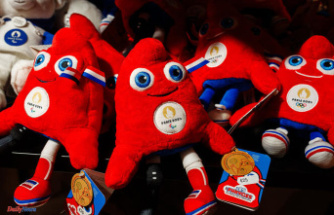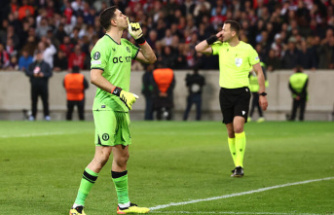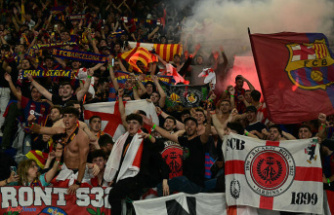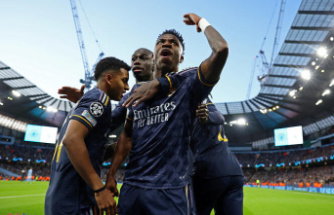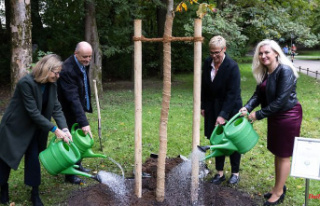The simultaneity of the crises overwhelms the world in this autumn of 2022. The effects are numerous and affect almost all areas of life - including the fringes of professional sport. At the Ironman in Hawaii, the costs explode. Because pandemic is and was. Who is going to pay for that?
It could be so beautiful. A beautiful island. Great weather. Relaxed people, a special culture. But many of those who have been driving to Hawaii, their longing place, in these and past days can expect a special kind of torture. One that pushes the limits of physical resilience. And not only to them. "We were amazed when we went to the supermarket for the first time," says age group athlete Patrick Roos. The 45-year-old triathlete from Bingen reports: "A packet of toast, white, quite normal: five to six dollars, a quarter melon twelve dollars."
Who can and will pay for this? Around 10,000 euros have always been estimated for the trip with a partner. Due to the intense climate with heat and high humidity, a timely arrival is essential. And those who are already there want to have a look at the island after the race.
Entry fee, flight, accommodation, meals. The Ironman World Championship in Hawaii will be more than ever a financial challenge this year. And that doesn't stop with the thousands of athletes who practice this sport as a hobby. "Many professionals in particular don't earn so much money with their sport that it would make sense from a purely business point of view to start here in Hawaii," says Sebastian Kienle: "You should be in the top ten to cover the costs. " For tenth place there is still the equivalent of around 11,300 euros. First place will be rewarded with almost 130,000 euros.
Participation in the World Cup, hard fought for by a corresponding result at another Ironman worldwide, becomes an economic question. "After some serious discussions with my team, we decided that it was just not possible for me. The costs are higher than I could ever afford," said Svenja Thoes recently via Instagram. The 31-year-old from Neunkirchen won the 3.86-kilometer swim, 180.2-kilometer bike ride and 42.2-kilometer run in Nice and most recently in Cervia, Italy.
The frustration among athletes is enormous. "And I can understand that, too. For many triathletes, Hawaii is a lifelong dream. Now you might be able to do it athletically, but then you can't afford to fly there financially - that's bitter," said Jan Sibbersen. The former multiple Hawaii starter is now an entrepreneur and runs the German House at the World Cup in Kailua-Kona. "This year we're going through everything as planned, next year the trip to Hawaii is basically up for debate," emphasized the 47-year-old.
The problem is complex. On the one hand, age group athletes have practically backed up due to the cancellation of the World Cup races in Hawaii in 2020 and 2021 due to the corona pandemic. Therefore, for the first time this year, the professional women - on October 6th - will start separately from the professional men - on October 8th, each with a group of amateurs. The format, which allows practically twice as many participants as the usual 2500, is to be retained, but also in the coming year.
"The atmosphere on site is such that we're a bit worried about how it's going to be," emphasized Florian Bögge, a German who lives in Hawaii and works as a coach, in a talk on Triathloninsider on youtube.com: "We don't have L.A. - or Berlin size, we are a small village."
He also explained that the rules have changed in Hawaii as to who can accommodate Kona guests. Almost everyone used to be able to sublet, but that is no longer the case. As a result, the range of accommodation has become smaller and the prices higher. In addition, many - especially from California - have moved to Kona during the pandemic. This has also caused housing prices to rise. "It's not that the prices for Ironman were increased, we bleed here every day," said Bögge.
When asked about the financial problem, Ironman refers to the general developments. Like all tour operators, they also have no control over travel expenses. "We are of course always looking for areas where we can improve the overall experience for the athletes and will continue to do so in the areas that we can influence," assured the global brand. Popular and outstanding events are also generally held in coveted travel destinations, so prices are also higher than in other locations, Ironman said.
It is a fact that hotels raise their prices during trade fairs and that accommodation is significantly more expensive during a football World Cup or a Formula 1 race. For the triathletes, however, the big problem is that the Ironman in Hawaii is simply the place to attract sponsors and satisfy their desire for public effectiveness. "It does represent a certain risk, especially for young athletes who have to use Hawaii as a stage, but could end up with a pretty big loss," says Kienle.
Patrick Roos, the age group athlete, gives an example of what the trip costs: flights for two for around 2200 euros, plus the transport costs for the bike. Three weeks of accommodation 3000 euros, which is a bargain. "It was sometimes crazy with 10,000, 20,000, 30,000 euros for normal apartments," he reports. Such sums for a week would have been "the deathblow" for them. "Even before that, it was a sport for the privileged, and only very privileged athletes can actually afford to participate in Hawaii," said Kienle.


